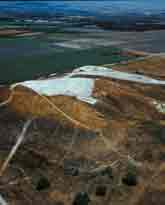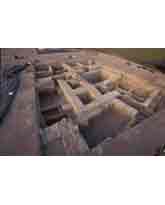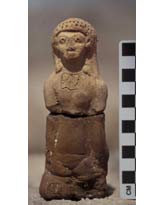Tel Rehob – A City from the Time of the Kingdom of Israel
Ami Mazar
Abstract
Tel Rehob is the main tell in the Jordan Valley and among the largest tells in the country. It extends over 100 dunam in area and consists of an upper and a lower tell.
The city of Rehob was the capital of a Canaanite city-state in the Late Bronze Age (1550-1200 BCE), at a time when Bet Shean was the center of government for Egyptian imperial rule in the region. Egyptian documents, among them the stele dating from the time of Seti I that was discovered in Bet Shean, mention the revolt by Canaanite cities against Egyptian rule, while Rehob, which is located near Bet Shean, remained loyal to Egypt. Rehob is mentioned again, together with Bet Shean, in the list of cities that were conquered by Shishak during his campaign in the Land of Israel in 925 BCE (I Kings 14:25).

The excavations at Tel Rehob have been conducted since 1997, on behalf of the Hebrew University of Jerusalem. Over the course of the excavations numerous remains were discovered, particularly from the 10th-9th centuries BCE, a period of great importance in understanding the history of Israel at the time of the beginning of the kingdom. The earliest remains are massive fortifications from the Early Bronze Age (the 3rd millennium BCE), including a mudbrick wall c. 9 m wide and an earthen glaçis preserved to a width of 13 m. Settlement remains dating from the Late Bronze Age I were discovered in the sectional trench on the western slope of the lower tell. Toward the top of the same sectional trench evidence was discovered attesting to the continuous occupation of the city throughout the entire Iron Age I (12th-11th centuries BCE). It appears that contrary to other places, the Canaanite city continued to exist throughout the entire period and maintained its Canaanite character.

The principal finds, as previously mentioned, are from the first phase of the Iron Age II (10th-9th BCE) – the time of the United Kingdom and the Omride dynasty. The city dating from the beginning of the kingdom is well-planned; although its houses were built of mud, wood was also extensively used in their construction. In one of the excavation areas a neighborhood cultic center (bema in the Bible) was discovered in which there were stone matzevot, an offering table and an ancillary building containing numerous artifacts and magnificent offering vessels.
The many finds in the destruction layers of this period reflect the ties that were maintained with Cyprus and Greece. Ceramic altars, a model of a decorated temple, figurines, seals and seal impressions, ivory carvings and even three short Hebrew inscriptions were discovered.

The rich ceramic assemblages allow us to study the development of pottery during this period. Organic materials, especially the seeds of corn and olives, make it possible to determine exact dates using radioactive methods (C14). These discoveries make Tel Rehob one of the key sites where the development of the material culture in Israel during the 10th-9th centuries BCE can be studied, and for understanding the material culture associated with the kingdom of David and Solomon.
In Stratum III remains associated with the city’s fortifications against the Assyrians were discovered, as well as evidence of the violent destruction that occurred during the campaign of Tiglath-Pileser III (732 BCE). Following the Assyrian conquest there was little activity within the area of the city.
In the Byzantine period Jewish Rehob was founded in the valley to the west of the tell. A synagogue was uncovered there whose mosaic floor was adorned with a unique inscription that includes a halachic text. It deals with commandments incumbent upon Jews living in the Land of Israel concerning tithing and fruits forbidden during the Sabbatical year. During the Early Islamic period a small village that existed until the Middle Ages was founded on the top of the tell.
Additional Articles ...